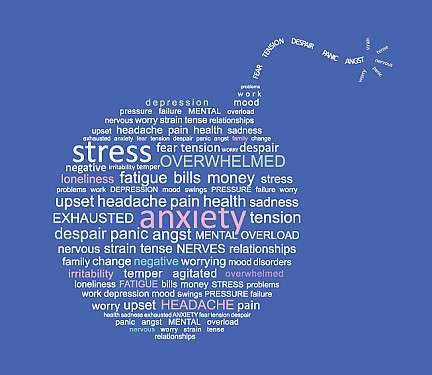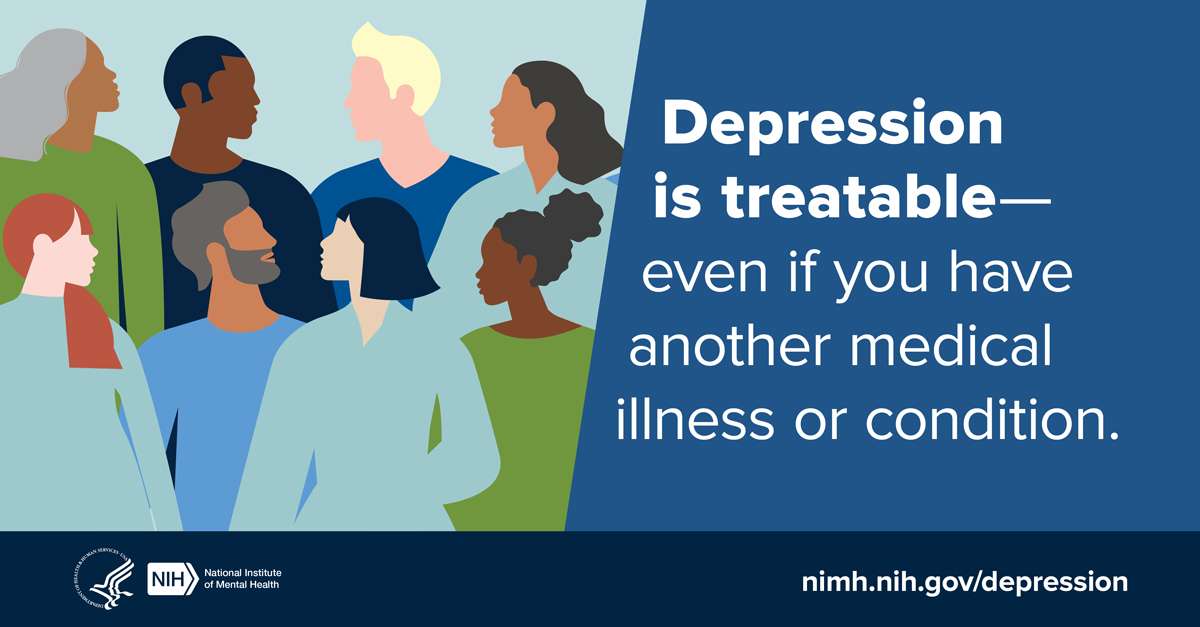Most of us know that exercise is good for our heart, our waistline, and for reducing stress. Now a new Swedish study published in the January edition of the Journal of Affective Disorders shows that regular moderate exercise can help improve symptoms of anxiety for people diagnosed with generalized anxiety disorder (GAD) and panic disorder (PD).
“The researchers found that doing some kind of exercise — whether it was low or high intensity — helped people experience their anxiety less after 12 weeks,” says Bradley Gaynes, MD, MPH, the division head of global mental health at the UNC School of Medicine in Chapel Hill, North Carolina; he was not involved in the study. “These results add to the growing evidence that exercise can be an effective part of a treatment plan for people with anxiety symptoms,” he says.
Researchers Compared the Effects of Low Intensity Exercise, High Intensity Exercise, and No Exercise
A total of 223 adults participated in the study; 70 percent were women, and the average age for both genders was 39. The most common anxiety disorder was generalized anxiety disorder (GAD) followed by panic disorder (PD), and half the participants had lived with anxiety for more than 10 years.
People taking medication for their anxiety were allowed in the study, though individuals with ongoing psychotherapy were not included.
Anxiety was measured with the Beck Anxiety Inventory (BAI), which is used to evaluate anxiety symptoms. Respondents are asked to report about the presence or severity of 21 phenomena — symptoms such as heart pounding, feeling shaky, different types of fears or feelings, indigestion or abdominal discomfort, face flushing, and sweating.
Depression was measured with the Montgomery-Åsberg Depression Rating Scale (MADRS) which includes 10 questions on sadness, sleep, appetite, concentration, and negative thoughts.
On average, the cardiorespiratory fitness level of the cohort was “considerably lower” than that of the general Swedish population. Likewise, the proportion of people with hazardous alcohol use was higher than the national average.
The exercise sessions consisted of circuit training and lasted for one hour each, which included 10 minutes of warm-up and 5 minutes of cooldown. Participants cycled through 12 stations that included cardio moves such as burpees and jumping rope, as well as body-weight resistance training exercises, such as squats and pushups.
Participants were randomly assigned to one of three groups:
- A low-intensity exercise group who did the above workout three times a week for 12 weeks. This group exercised at a level that was intended to reach around 60 percent of their maximum heart rate.
- A group who did the same workout at a higher intensity, with the aim to attain 75 percent of maximum heart rate
- A control group who didn’t exercise
The levels of effort were regularly validated using the Borg scale, an established rating scale for perceived physical exertion, and confirmed with heart rate monitors.
The Mix of Cardio and Strength Training Reduced Anxiety Symptoms
Researchers found that a combination of cardio and strength training done for at least 45 to 60 minutes, three times or more per week, for at least three months offered the maximum benefit when it came to reducing anxiety symptoms.
Most individuals in the treatment groups went from a baseline level of moderate to high anxiety to a low anxiety level after three months of working out, according to the authors. In the group that exercised at relatively low intensity, the chance of improvement in terms of anxiety symptoms rose by a factor of 3.62. In those who exercised at higher intensity, the chance of improvement was 4.88.
“There was a significant intensity trend for improvement — that is, the more intensely they exercised, the more their anxiety symptoms improved,” said the study’s lead author, Malin Henriksson, a doctoral student at Sahlgrenska Academy at the University of Gothenburg and specialist in general medicine, in a university press release.
“These results confirm what I’ve seen in my experience in treating people: Exercise can be a useful add-on to what people are already doing to manage their depression and anxiety. Some people find it to be quite helpful,” says Dr. Gaynes.
“As far as interventions go, exercise is low-risk and low-cost, and the side effects are mostly good. There aren’t really any downsides to it,” he says.
The possibility of using exercise to treat mental health disorders is a growing area of interest amongst researchers, clinicians, and patients alike. As a result, we are now seeing the emergence of a robust body of literature suggesting that exercise can have a positive impact on a number of anxiety disorders, including GAD. According to a 2013 review, for example, “Preliminary data suggest that exercise training can serve as an alternative therapy for patients with […] generalized anxiety disorder.” Significantly, the review found that “anxiety reductions appear to be comparable to empirically supported treatments [for GAD],” which means that it may be used both in addition to and in place of treatments such as medication and cognitive behavioral therapy (CBT), potentially allowing you to decrease dependence on other forms of intervention.
In addition to confirming that exercise can be used as GAD treatment, studies have also elucidated the neural mechanisms behind this phenomenon. Specifically, exercise is believed to impact important neurotransmitter activity as well as stimulating critical areas of the brain in a way that reduces anxious responses. As one research cohort led by Dr. Lindsey DeBoer points out, “Animal studies have demonstrated that exercise produces similar alterations in neural systems alterations in neural systems, such as the serotonergic and noradrenergic systems, which are presumed to underlie pharmacologic treatments for depression and anxiety.” These alterations include increased serotonin levels, lower cortisol levels, and increased GABA concentrations, all of which can increase feelings of wellbeing and potentially counteract the neurotransmitter dysfunction associated with GAD.
However, exercise has also been found to produce new, excitable brain cells, which, until recently, seemed at odds with the calming effects exercise can have as these excitable brain cells are particularly vulnerable to anxious responses. In 2013, researchers at Princeton University sought to better understand this apparent contradiction and, in the process, came to produce new knowledge about how exercise functions to counteract anxiety. Using mouse models, they found that while mice that exercised did indeed have new, excitable brain cells in higher numbers than sedentary mice, a “notable number” of those new brain cells were “specifically designed to release the neurotransmitter GABA, which inhibits brain activity, keeping other neurons from firing easily.” In other words, many of the newly developed neurons are of a type that reduces overall anxiety levels.
The impact of this was further explored by testing the response of the mice in a cold bath. The researchers found that excitable cells fired in both the exercising and sedentary mice when exposed to the stress of the cold bath, but this response was short-lived in the exercising mice. As Gretchen Reynolds writes in The New York Times:
The brains, unlike those of the sedentary animals, showed evidence that the shushing neurons also had been activated in large numbers, releasing GABA, calming the excitable neurons’ activity, and presumably keeping unnecessary anxiety at bay. In effect, the runners’ brains had responded to the relatively minor stress of a cold bath with a quick rush of worry and a concomitant, overarching calm.
Significantly, this response was not tested immediately following exercise. Rather, the mice had not exercised at all in the 24 hours leading up to the cold baths, suggesting that the impact of exercise on the brain is durable rather than ephemeral, representing a “fundamental remodeling of [the brain].”
In addition to improving anxiety directly, exercise has been found to reduce physical tension, improve sleep, reduce fatigue, improve concentration, and stabilize mood. Additionally, many people find that exercise increases their self-esteem both due to the neurochemical effects of exercise itself as well as feelings of pride in their physical accomplishments.
The physical benefits of exercise — improving physical condition and fighting disease — have long been established, and physicians always encourage staying physically active.
Exercise is also con sidered vital for maintaining mental fitness, and it can reduce stress. Studies show that it is very effective at reducing fatigue, improving alertness and concentration, and at enhancing overall cognitive function. This can be especially helpful when stress has depleted your energy or ability to concentrate.
sidered vital for maintaining mental fitness, and it can reduce stress. Studies show that it is very effective at reducing fatigue, improving alertness and concentration, and at enhancing overall cognitive function. This can be especially helpful when stress has depleted your energy or ability to concentrate.
When stress affects the brain, with its many nerve connections, the rest of the body feels the impact as well. Or, if your body feels better, so does your mind. Exercise and other physical activity produce endorphins — chemicals in the brain that act as natural painkillers — and also improve the ability to sleep, which in turn reduces stress.
Scientists have found that regular participation in aerobic exercise has been shown to decrease overall levels of tension, elevate and stabilize mood, improve sleep, and improve self-esteem. About five minutes of aerobic exercise can begin to stimulate anti-anxiety effects.
Relationship of Exercise to Anxiety Disorders
Stress and anxiety are a normal part of life, but anxiety disorders, which affect 40 million adults, are the most common psychiatric illnesses in the U.S. The benefits of exercise may well extend beyond stress relief to improving anxiety and related disorders.
Psychologists studying how exercise relieves anxiety and depression suggest that a 10-minute walk may be just as good as a 45-minute workout. Some studies show that exercise can work quickly to elevate depressed mood in many people. Although the effects may be temporary, they demonstrate that a brisk walk or other simple activity can deliver several hours of relief, similar to taking an aspirin for a headache.
Science has also provided some evidence that physically active people have lower rates of anxiety and depression than sedentary people. Exercise may improve mental health by helping the brain cope better with stress. In one study, researchers found that those who got regular vigorous exercise were 25 percent less likely to develop depression or an anxiety disorder over the next five years.
Exercise as Part of Therapy
According to some studies, regular exercise works as well as medication for some people to reduce symptoms of anxiety and depression, and the effects can be long lasting. One vigorous exercise session can help alleviate symptoms for hours, and a regular schedule may significantly reduce them over time.
Although exercise has a positive effect for most people, some recent studies show that for some, exercise may not have a positive effect on anxiety or depression or may not make a strong impact on long-term mental health.
Like all forms of therapy, the effect can vary: Some people may respond positively, others may find it doesn’t improve their mood much, and some may experience only a modest short-term benefit. Nonetheless, researchers say that the beneficial effects of exercise on physical health are not in dispute, and people should be encouraged to stay physically active.
Resources – ADAA Member Experts
Read all about it: Exercise for Mood and Anxiety, Proven Strategies for Overcoming Depression and Enhancing Well-Being, by Michael W. Otto, PhD, and Jasper A.J. Smits, PhD (Oxford University Press, 2011)
Fitness Tips: Stay Healthy, Manage Stress
The most recent federal guidelines for adults recommend at least 2½ hours of moderate-intensity physical activity (e.g. brisk walking) each week, 1¼ hours of a vigorous-intensity activity (such as jogging or swimming laps), or a combination of the two.
If you have an exercise program already, keep up the good work. If not, here are tips to get you started.
- 5 X 30: Jog, walk, bike, or dance three to five times a week for 30 minutes.
- Set small daily goals and aim for daily consistency rather than perfect workouts. It’s better to walk every day for 15-20 minutes than to wait until the weekend for a three-hour fitness marathon. Lots of scientific data suggests that frequency is most important.
- Find forms of exercise that are fun or enjoyable. Extroverted people often like classes and group activities. People who are more introverted often prefer solo pursuits.
- Distract yourself with an iPod or other portable media player to download audiobooks, podcasts, or music. Many people find it’s more fun to exercise while listening to something they enjoy.
- Recruit an “exercise buddy.” It’s often easier to stick to your exercise routine when you have to stay committed to a friend, partner, or colleague.
- Be patient when you start a new exercise program. Most sedentary people require about four to eight weeks to feel coordinated and sufficiently in shape so that exercise feels easier.
Cold Weather Exercise
Learn more about exercising in cold weather.
- Dress in layers. Exercise in layers that you can remove as you start to sweat and put back on as needed.
- Protect your hands, feet, and ears. Make sure your extremities aren warm and wear gloves, socks, and headbands to prevent frostbite.
- Pay attention to weather conditions and wind chill. Rain and wind can make you even more vulnerable to the effects of the cold. If the temperature is below zero degrees and the wind chill is extreme, consider taking a break or finding an indoor activity.
- Choose appropriate gear. It gets dark earlier in the winter, so be sure to wear reflective clothing. Wear shoes with enough traction to prevent falls in snow or ice.
- Remember sunscreen. It’s just as easy to get burned in the winter as in summer, so don’t forget the SPF.
- Head into the wind. Plan your route so the wind is at your back toward the end of your workout to prevent getting a chill after working up a sweat.
- Drink plenty of fluids. It can be harder to notice the symptoms of dehydration in cold weather, so drink fluids before, during, and after a workout, even if you’re not thirsty.
- Know the signs of frostbite and hypothermia. Know the signs and get help immediately to prevent frostbite and hypothermia.



